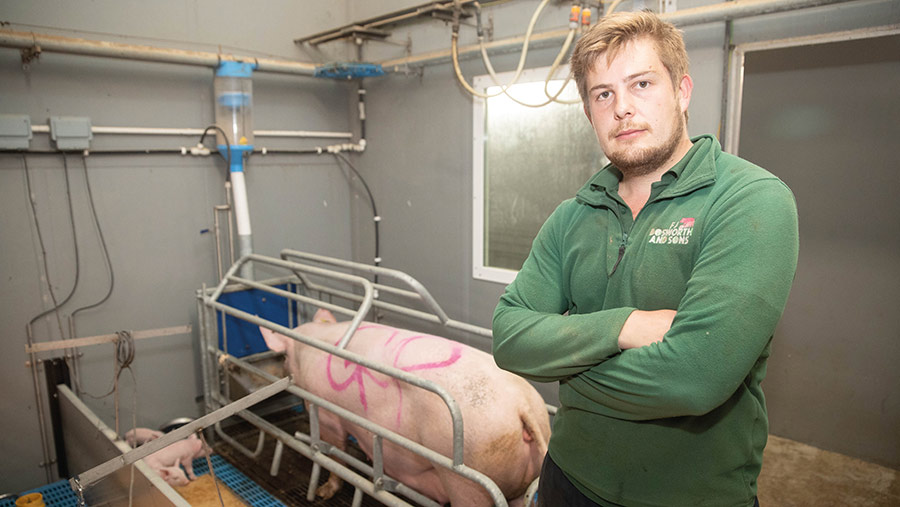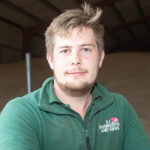Farmer Focus: Hoping tech helps gilt growth
 Jack Bosworth © Tim Scrivener
Jack Bosworth © Tim Scrivener Something I have written about a few times already is our gilts and the importance of getting things right from the start to set them up for a successful breeding life.
The 2023 Farming & Equipment Technology Fund is expected to open this month for animal health and welfare items, which we will be applying for.
If successful, we will be investing in electronic feeding, weighing and sorting facilities for our gilts.
See also: How gilt ration tweaks are helping improve pig litter size
At present, our gilts are first introduced to an electronic sow feeder (ESF) at about 210-220 days of age, having completed one to two weeks of “training” in a pen that is split in two via a replica ESF entrance and exit gate.
The idea is that gilts must go through the one-way entrance gate to get to an ad-lib feeder and then go through the one-way exit gate to access drinkers.
This process is in place to educate the pigs.
We have found that the time in training sets the gilts up well for negotiating their way through ESF stations for their gestation feeding throughout their breeding life.
The main downfall of the current system is that we can’t monitor and make informed decisions on the optimum timeline for introducing our gilts into the breeding programme.
We need to monitor weights to ensure the right nutritional intake for the age and weight of each individual animal before first service.
We do weigh a random selection of gilts, but this involves running them through our scales in a corridor, which means more stress on the animals and is labour intensive to perform.
The ability to get our gilts on to ESF earlier, as well as introducing a dedicated weighing and sorting facility, would bring huge advantages for planning breeding timelines.
Daily weighing of each animal would mean we could identify which animals are producing the best feed conversion ratios, which would be an incredibly valuable tool for selecting the best breeding stock.
Daily weight monitoring would also allow us to forecast an optimum service week for individual animals.
This could save on wasted feeding days and increase conception rates, as well as saving money on feed and artificial insemination.

